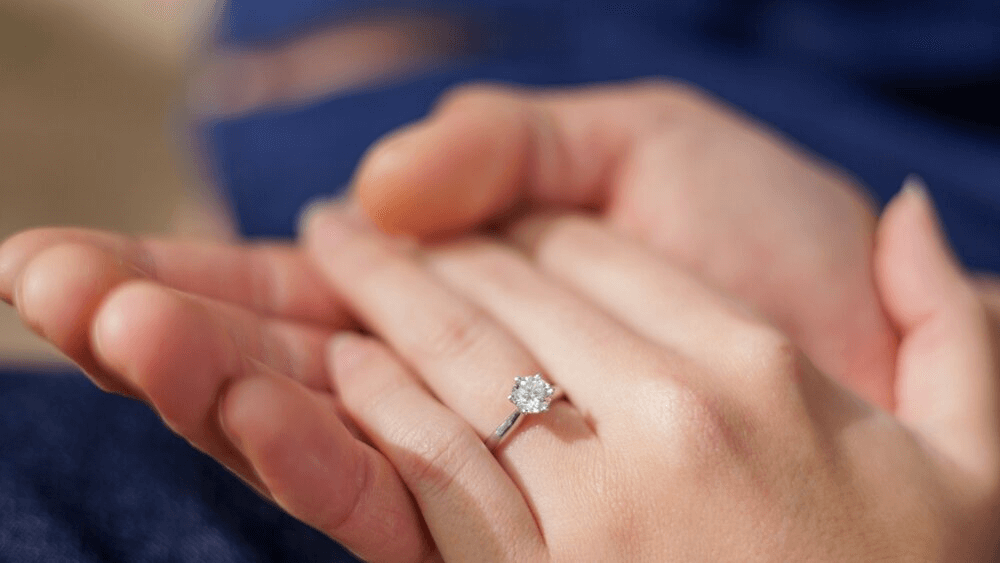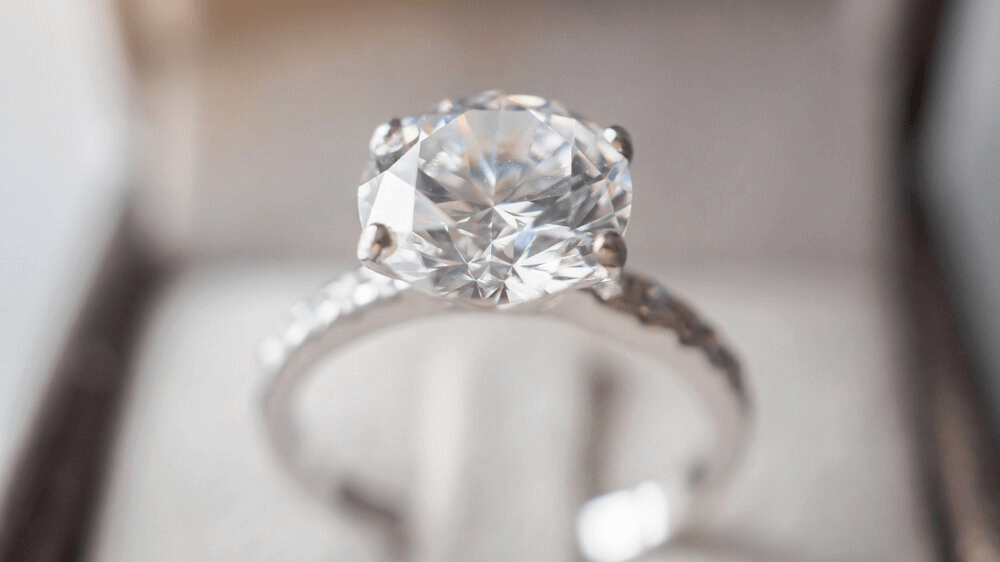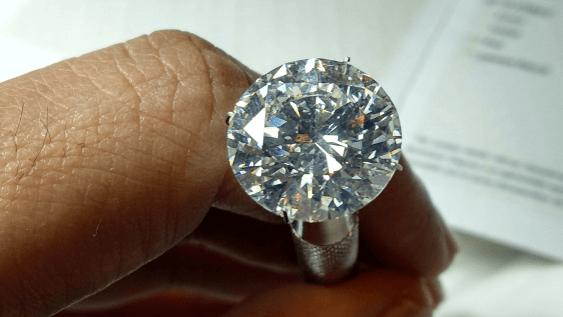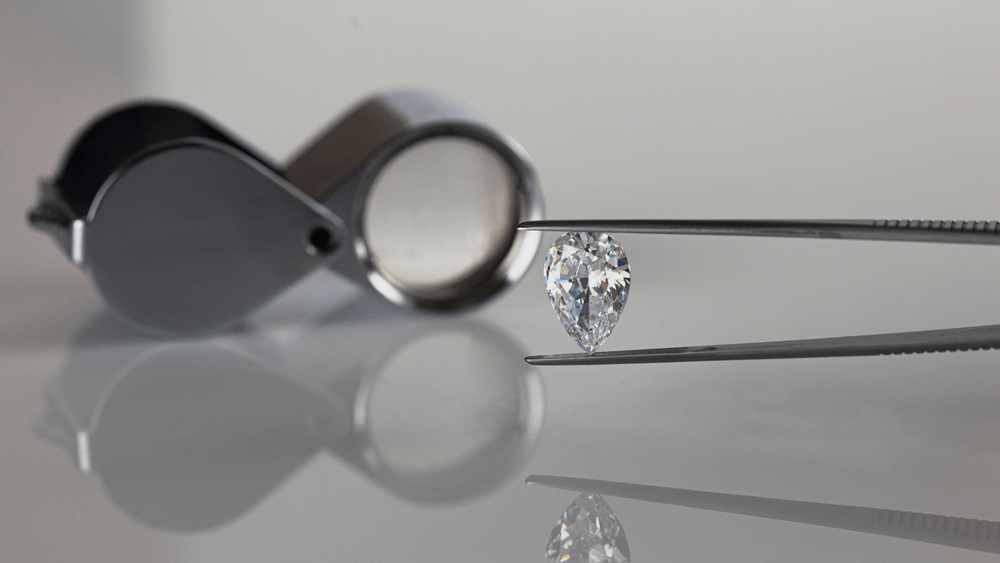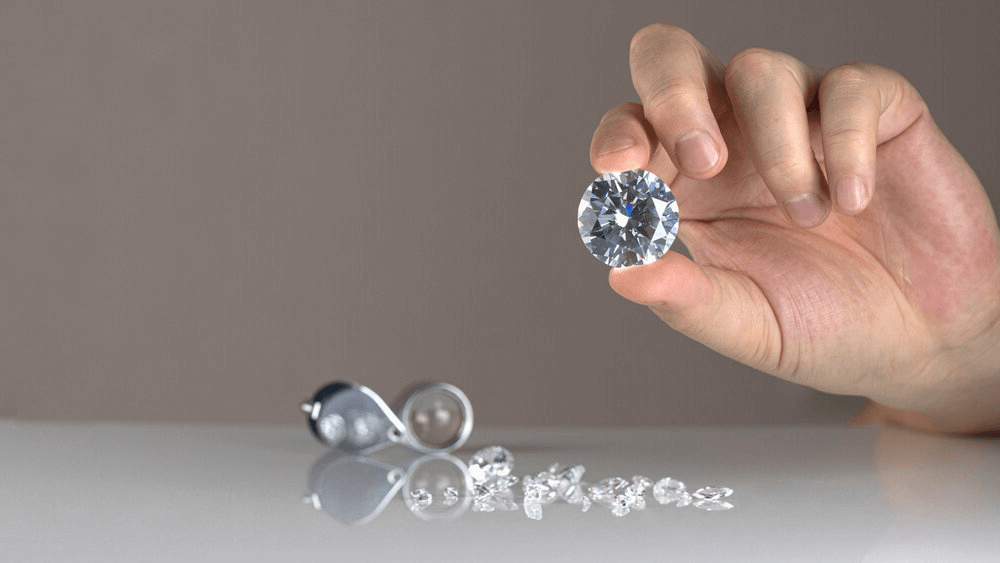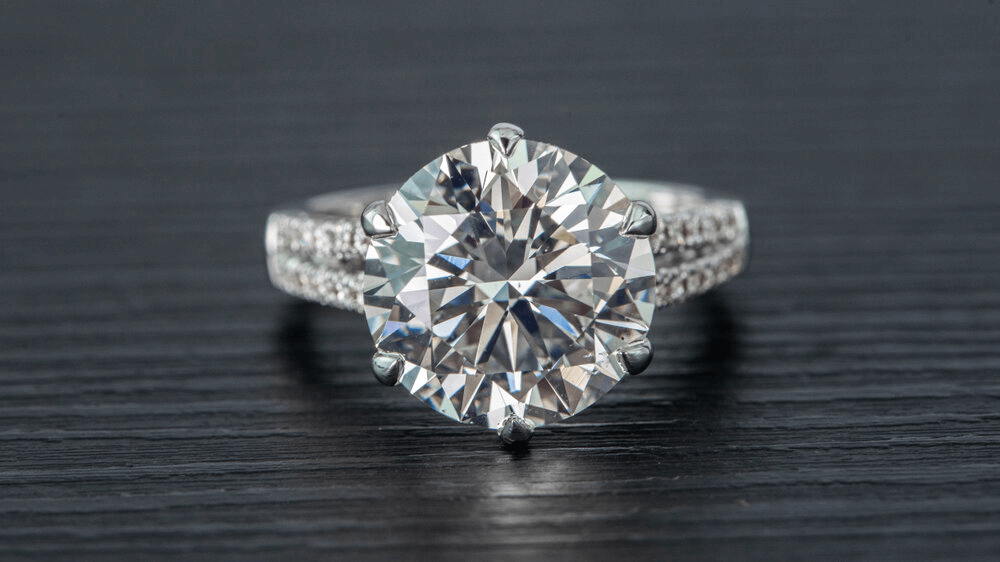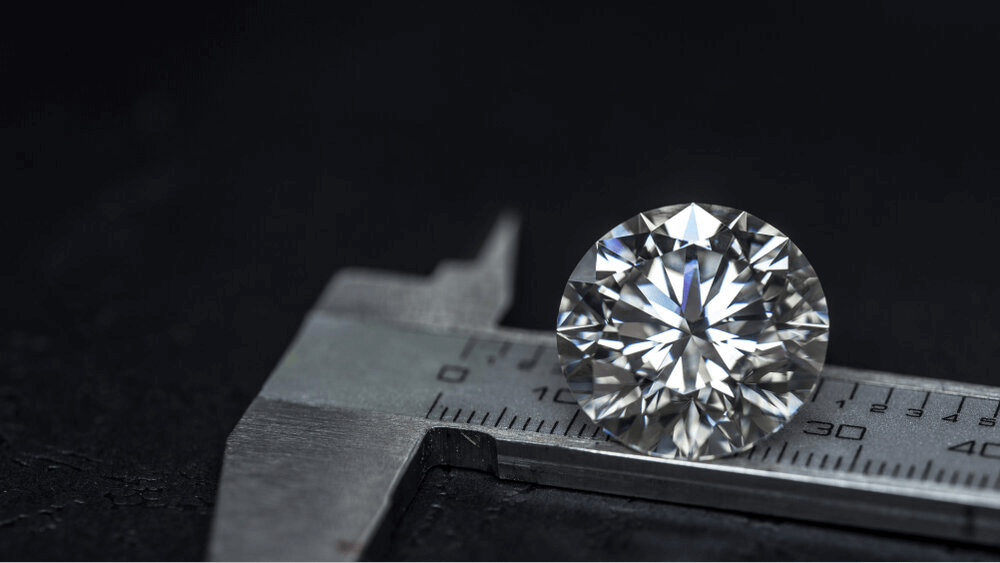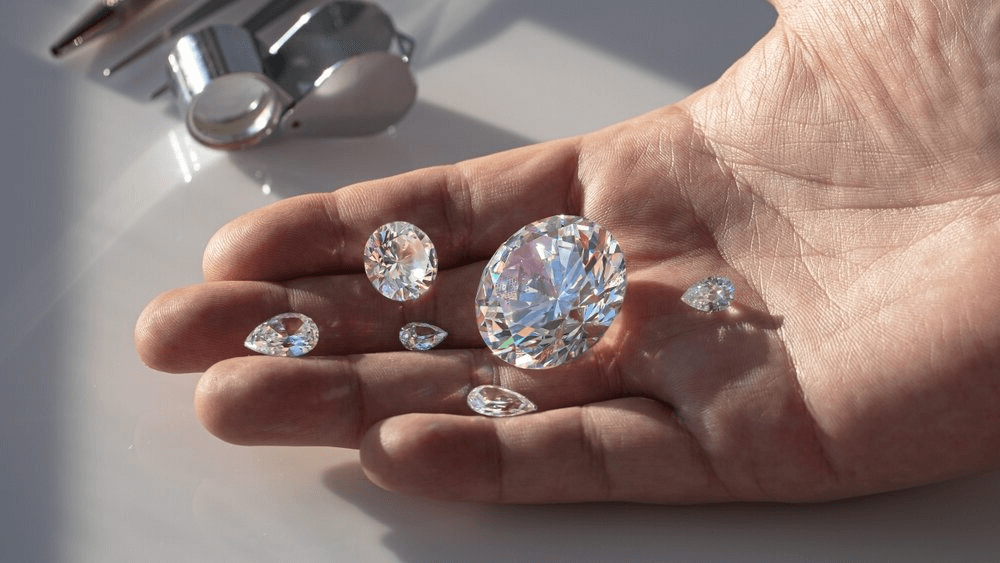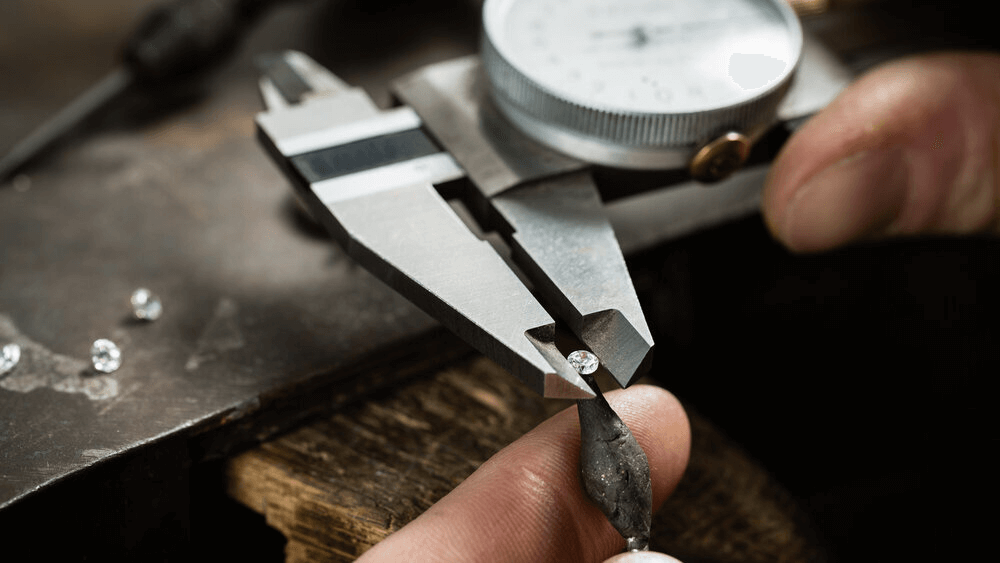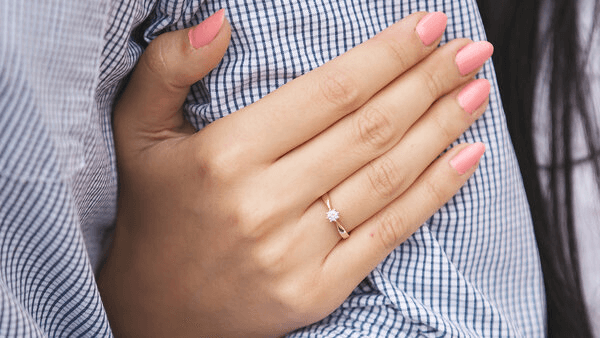0.7, 0.8, 0.9 Carat Diamond Showdown: Which One Wins?

By Gary A.

Edited by Olivia H.
Published Aug 13, 2024
Edited on Dec 18, 2024
When it comes to choosing between 0.7, 0.8, and 0.9 carat diamonds, the smallest differences can make the biggest impact on both your budget and the brilliance of your engagement ring—let’s uncover which size truly shines above the rest.

Navigate this guide:
- 7 Quick Tips for Picking a 0.7, 0.8, or 0.9 Carat Diamond Ring
- Introduction
- The Allure of Carat Weight
- The 0.7 Carat Enigma
- The 0.8 Carat Balance
- The 0.9 Carat Near-Miss
- Natural vs. Lab-Grown 0.7 Carat & 0.9 Carat Diamonds
- Our Expert Take
- 8 Frequently Asked Questions About 0.7, 0.8, and 0.9 Carat Diamonds
Before we dive deeper into the specifics of 0.7, 0.8, and 0.9 Carat Diamonds, here are some practical tips to help guide your decision-making process.
7 Quick Tips for Picking a 0.7, 0.8, or 0.9 Carat Diamond Ring
- Tip 1:Understand the Price Jumps:
- Diamond prices don’t increase linearly with carat weight. There’s a significant price jump at the whole and half-carat marks. For instance, a 0.9 carat diamond might be considerably cheaper than a 1 carat, even though the size difference is minimal to the naked eye.
- Tip 2:Prioritize the Cut:
- The cut of the diamond affects its brilliance and sparkle. Even if you’re getting a 0.7, 0.8, or 0.9 carat diamond, a high-quality cut can make it look more luminous and larger than its actual size.
- Tip 3:Examine the Diamond Under Different Lighting:
- Before purchasing, view the diamond under various lighting conditions. This will give you a better idea of its sparkle and any potential inclusions or flaws.
- Tip 4:Consider Diamond Shape:
- The shape of the diamond can influence its perceived size. For instance, elongated shapes like oval or marquise might appear larger than a round diamond of the same carat weight.
- Check for Certification: Always ensure that the diamond comes with a certification from a reputable lab, detailing its 4 Cs (Carat, Cut, Color, Clarity). This provides an unbiased assessment of the diamond’s quality.
- Tip 5:Be Wary of the Setting:
- The ring’s setting can either enhance or diminish the diamond’s appearance. A halo setting, for instance, can make a diamond appear larger, while a thick band might overshadow a smaller carat diamond.
- Tip 6:Factor in the Total Carat Weight:
- If you’re considering a ring with side stones or a halo, remember to differentiate between the main diamond’s carat weight and the total carat weight of all the diamonds combined. The main stone’s size is what will be most noticeable.
- Tip 7:Research Price Points:
- Before purchasing, research the average price points for 0.7, 0.8, and 0.9-carat diamonds with similar cut, clarity, and color grades. This will help you identify if a particular diamond is overpriced or if you’re getting a good deal.
Now that you’ve got these practical tips, use Jeweler AI below to find the perfect engagement ring that suits your style and budget:
Introduction
If there’s one area in your life where it’s definitely a good idea to go the full distance, it’s your proposal. Why go to Olive Garden when there’s a fine-dining Italian restaurant two blocks over? Why go down on one knee at the State Fair when Disneyland never sells out of tickets? Why go for 0.8 carat diamond when there are plenty of 1 carat diamonds to choose from?
Well, not exactly – at least, for that last one. But, hey, we’d never talk you out of a trip to Olive Garden.
When it comes to diamonds just below the one carrot mark, there are plenty of reasons to consider them over the alternative. What represents practically unnoticeable differences in size and weight correlates to a significant difference in price. Savvy shoppers, keep on reading…
The Allure of Carat Weight
We care about carat weight because it directly corresponds to diamond size and diamond size is seen as a pretty big marker of status and, let’s face it, sentiment. Bigger diamonds do a lot of talking; since they are significantly more expensive, they demonstrate how serious the proposer is about the proposee, and they also attract a lot of positive attention.
Decoding Carat Size
There’s no right or wrong answer to the question, what carat weight makes a big diamond? Generally speaking, we’re impressed by diamonds that fall around the 1 carat mark or, obviously, way above it. 1 carat is the US average (approximately speaking), and that hasn’t changed in a long time.
Of course, this means that 1 carat diamonds come at a premium since a lot of shoppers set out knowing that they’re not going to dip below that 1 carat mark.
The Impact on Price and Aesthetics
Diamond value increases exponentially with weight. Put simply, this means that a 0.5 carat diamond is worth less than half what a 1 carat diamond is worth. Put the other way, that means that a 1 carat diamond is worth substantially more than double.
For shoppers, this complicates things. It means that, if you go for the 1 carat diamond, you know you are paying a substantial premium just to get a diamond that reaches that 1 carat threshold. For some people, this is par for the course when buying a luxury item. Other people, however, want to find a way to get a lot more from their investment.
1 carat Is what’s known as a magic weight. It is a particularly popular carat weight, like 2 carats, 2.5 carats or five carats, for instance. There are a lot of magic greats, but even more non-magic weights. Things like 1.14, 2.37, 0.96, etc. All those ‘random’ numbers in between.
Magic weights get an extra price boost because everybody is searching for them. Nobody goes on Google and searches for a 2.37 carat diamond. Instead, they would be searching for a 2.5 carat diamond. So, as well as that exponential value increase, there’s another factor contributing to their high asking price.
0.7, 0.8, and 0.9 are not magic carat weights. However, they still appear close to 1 carat diamonds in terms of size.
The 0.7 Carat Enigma
A 0.7 carat diamond equates to around 0.14 grams. If you’re looking at a 0.7 carat diamond cut in a round brilliant shape (with ideal proportions), then it’s going to feature a diameter of around 5.68mm.
By comparison, a 1 carat diamond of the same proportions will feature a diameter of 6.4mm, so there’s less than a millimeter between the two. For some people, that millimeter is a deal breaker – for others, it’s an opportunity.
Size and Elegance Intersect
0.7 carats still carry plenty of weight (figuratively speaking) on the finger. A diamond of this size is not so small that it appears underwhelming or cheap, and it’ll still prove big enough to put on an excellent light performance. Smaller diamonds also conceal inclusions and other flaws like color better than bigger diamonds, since there’s less there for the eye to scrutinize. This can be a great way to make a lower clarity grade and color grade work for you.
Price Dynamics and Value
An eye clean, well cut 0.7 carat round brilliant with no noticeable color (to the naked eye) will generally fall around the $2,000 threshold. You may get it for a little less – between $1,700 and $1,900 – if you’re willing to go for a lower clarity grade like SI2, which is totally feasible at this size.
That’s significantly lower than a similar 1 carat diamond, which can run between $5,000 and $6,000.
The 0.8 Carat Balance
The story is pretty similar for 0.8 carat diamonds. A little heavier than 0.7 carats, these diamonds weigh around 0.16 grams – so, not enough for you to notice without a powerful scale. This means they weigh 0.04 grams less than a 1 carat diamond.
A round brilliant 0.8 carat diamond with ideal proportions will have a diameter of just over 5.9mm, making it a little less than half a millimeter smaller than a 1 carat diamond.
Nearing the Coveted 1 Carat
While the differences between a 0.7 carat and a 0.8 carat are minimal, this represents one valuable step closer to the 1 carat range. This makes it a very popular option, since it’s not insignificantly bigger than a 0.7 carat diamond, but still much more affordable than the 1 carat…
Cost Considerations
As you might expect, 0.8 carat diamonds will start around the $2,000 range, which is the upper end of the 0.7 carat price point. You can expect to pay between $2,500 and $3,000 for a great quality diamond with low yet eye clean color and clarity grades and a great cut. However, these diamonds can run up to $5,000 when you’re looking at the higher ends of those Four Cs.
The 0.9 Carat Near-Miss
Finally, we have the 0.9 carat diamond. While the upper end of the 0.9 range – say, 0.98 and 0.99 carats – can still be subject to the same price hike as a 1 carat diamond, 0.9 carats can be a great option for getting a really attractive price for a good quality diamond.
The Almost 1 Carat Illusion
0.9 carats is 0.18 grams – just 0.02 grams below the weight of a 1 carat diamond. If we look again at a well-proportioned round brilliant as an example, 0.9 carats equates to 6.17mm – so we’re getting very close to that 1 carat measurement.
In fact, to the naked eye, it wouldn’t be all that easy to distinguish between a 0.9 carat diamond and a 1 carat diamond. Remember that, with all the fire and brilliance flashing across the surface, it’s hard for the eye to gauge the exact parameters of the diamond.
Price Advantages Explored
A lot of people don’t want to opt for a 0.9 carat diamond when it’s so close to the neat, rounded number of ‘1’. This is understandable, but it’s also a mistake to rule out an option that is almost as good – and, for all intents and purposes, basically the same – but significantly cheaper.
0.9 carat diamonds can be as cheap as $1,000 – although the quality will be very poor, and nowhere near good enough for jewelry – or run all the way up to $,6000. If you’re wise with clarity and color and emphasize a strong cut grade, you can expect to pay around $3,5000 to $4,500.
Natural vs. Lab-Grown 0.7 Carat & 0.9 Carat Diamonds
When deciding between a natural and a lab-grown 0.9 carat diamond, the choice often boils down to personal values and budget.
1. Origins & Environmental Impact:
Natural diamonds are formed over billions of years deep within the earth, adding a timeless appeal to their story. Lab-grown diamonds, however, are created in a matter of weeks using advanced technology, leaving a smaller carbon footprint compared to traditional mining.
2. Price Differences:
One of the most noticeable distinctions is price. A natural 0.9 carat diamond typically costs significantly more than its lab-grown counterpart, often by 30-40%. This makes lab-grown diamonds an attractive option for budget-conscious buyers.
3. Quality and Appearance:
Both natural and lab-grown diamonds have identical physical and chemical properties, which means they look virtually the same to the naked eye. However, some buyers may feel a stronger connection to natural diamonds, considering them more unique due to their geological history.
4. Resale and Investment:
Natural diamonds tend to retain more resale value, as they are seen as rarer and more traditional. Lab-grown diamonds, while beautiful, have a lower resale value due to their more abundant availability.
Average Prices for 0.7 Carat Lab-Grown Diamonds
Here’s a table summarizing the average prices of lab-grown and natural diamonds for 0.7 carat stones, along with a brief explanation.
| Carat | Shape | Color | Clarity | Natural Price ($) | Lab-Grown Price ($) |
|---|---|---|---|---|---|
| 0.7 | Round | F | VS2 | $2750 | $690 |
| 0.7 | Pear | F | VS2 | $2320 | $720 |
The table above highlights the average prices for 0.7 carat diamonds in both natural and lab-grown categories. Natural round diamonds average $2,750, while their lab-grown counterparts are priced at just $690. Similarly, pear-shaped diamonds have an average natural price of $2,320, compared to $720 for lab-grown.
This significant price difference reflects the increasing popularity of lab-grown diamonds, which provide a cost-effective alternative for those seeking larger stones without sacrificing quality. As buyers become more conscious of their budget, lab-grown diamonds emerge as an attractive option, combining beauty and affordability.
Average Prices for 0.9 Carat Lab-Grown Diamonds
Here’s a table summarizing the average prices of lab-grown and natural diamonds for 0.9 carat stones, along with a brief explanation.
| Carat | Shape | Color | Clarity | Natural Price ($) | Lab-Grown Price ($) |
|---|---|---|---|---|---|
| 0.9 | Round | F | VS2 | $4124 | $1340 |
| 0.9 | Pear | F | VS2 | $3020 | $890 |
For a 0.9 carat diamond with F color and VS2 clarity, lab-grown options are significantly more affordable than natural diamonds. For instance, a round lab-grown diamond costs around $1,340 compared to $4,124 for a natural one, while a pear-shaped lab-grown diamond is priced at about $890 versus $3,020 for the natural counterpart. This substantial price difference makes lab-grown diamonds an attractive choice for those seeking both beauty and value.
Our Expert Take
1 carat diamonds are very popular, but a more cost-effective alternative is always hiding in plain sight. While a lot of people (understandably) value the cultural appeal of 1 carat diamonds (or higher), there’s a good deal to be found if you don’t mind dropping a little below that threshold.
The visual impact is minimal, and the weight on her finger even less so.
8 Frequently Asked Questions About 0.7, 0.8, and 0.9 Carat Diamonds
- What’s the size difference between 0.7, 0.8, and 0.9 carat diamonds?
Answer: The size difference is subtle but noticeable, especially between 0.7 and 0.9 carats. Each step up in carat size brings a slight increase in diameter, making the diamond appear larger.
- Is a 0.9 carat diamond a good alternative to 1 carat?
Answer: Yes, a 0.9 carat diamond is a popular alternative to 1 carat as it offers a near-identical appearance for a significantly lower price due to pricing thresholds at full carats.
- Can a 0.7 or 0.8 carat diamond look as impressive as a larger stone?
Answer: Absolutely. With a high-quality cut and a strategic setting, even diamonds less than 1 carat can exhibit stunning brilliance and appear larger.
- How does carat weight affect the price of diamonds in the 0.7 to 0.9 range?
Answer: Diamond prices increase with carat weight, but there are significant price jumps at half and full carat marks. Diamonds just shy of these weights, like 0.9 carat, can offer better value.
- Is there a noticeable quality difference between 0.7, 0.8, and 0.9 carat diamonds?
Answer: Carat weight primarily affects size, not quality. The quality is determined by the diamond’s cut, color, and clarity, which can vary across any carat weight.
- Should I consider a 0.8 carat diamond for an engagement ring?
Answer: A 0.8 carat diamond can be an excellent choice for an engagement ring, offering a substantial size that’s close to 1 carat but at a more affordable price point.
- Are 0.7 carat diamonds too small for an engagement ring?
Answer: Not at all. A 0.7 carat diamond can be perfect for those who prefer a more understated elegance or have a limited budget. The right cut and setting can enhance its presence.
- How do I choose between 0.7, 0.8, and 0.9 carat diamonds?
Answer: Consider your budget, the desired appearance, and the recipient’s preferences. Viewing diamonds in person can help you decide which size meets your expectations and needs best.
Discover Your Perfect Diamond with Jeweler AI: Navigate 0.7 vs 0.8 vs 0.9 Carat Choices Effortlessly.
Here are more specific diamond prices topics to browse:
- Melee Diamonds: The Perfect Accents to Enhance the Center Stone
- Small Diamond Engagement Rings: Big Sparkle Comes In Little Packages
- 0.25 Carat Diamond: Tiny Treasure or Just Too Small?
- The True Value of a 0.5 Carat Diamond Ring Revealed
- Price Alert: Don’t Overpay for a 1 Carat Diamond Ring!
- What You Should Pay for a 1.5 Carat Diamond Ring?
- Price Alert: How Much Should You Pay for a 2 Carat Diamond Ring?
- How Much Does a 2.5 Carat Diamond Really Cost?
- The Real Cost of a 3 Carat Diamond Ring
- Industry Secret: How Much Does a 4-Carat Diamond Ring Actually Cost?
- How Much is Too Much? The True Cost of 5 Carat Diamond Ring!
- 6 Carat Diamond Rings: Pricing Breakdown & Value Tips
- 7 Carat Diamond Rings: Affordable Luxury Prices Revealed
- 8 Carat Diamond Rings: Price Comparison & Savings Tips
- 9 Carat Diamond Rings: Detailed Pricing Guide & Best Deals
- 10-13 Carat Diamonds: The Ultimate Symbol of Luxury!
- 15 Carat Diamonds: Why Celebrities Love Them!
- Unveiling the Majesty: The Secrets Behind the 20 Carat Diamond Ring!
- Decoding the Grandeur: The Journey to Choosing a 25 Carat Diamond Ring
- Average Carat Size for Rings: What’s the Ideal?
- Understanding What Is CTTW Diamond In Engagement Ring
- The Truth About Why Diamonds Are So Expensive and Incredibly Valuable
FOLLOW-UP GUIDE SERIES

